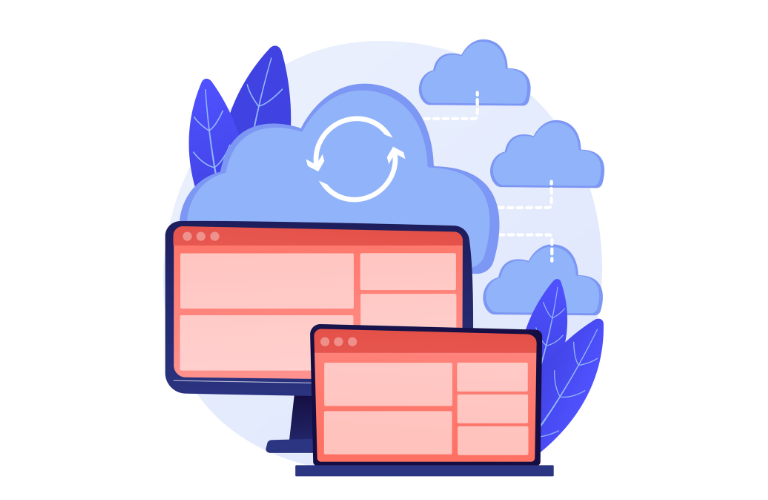In today’s digital landscape, application performance isn’t just a luxury—it’s a necessity. A slow Laravel application can lead to poor user experience, decreased conversion rates, and lower search engine rankings. Research shows that a one-second delay in page load time can result in a 7% reduction in conversions. This comprehensive guide will walk you through 15 proven techniques to optimize your Laravel Application Performance and deliver lightning-fast responses to your users.
Table of Contents
Laravel Application Performance Implementation
1. Implement Route Caching
Route caching significantly reduces the time Laravel spends parsing and registering routes. In large applications with numerous routes, this can provide a notable Laravel Application Performance boost.
Also if you are a Laravel Developer so use some tools for easy development and explore this tool which officially from Laravel.
php artisan route:cacheThis command compiles all your routes into a single cached file, eliminating the need for Laravel to scan and register routes on every request. Remember to clear and regenerate the cache when updating routes:
php artisan route:clear
php artisan route:cache2. Optimize Composer’s Autoloader
The autoloader optimization is crucial for production environments as it creates a map of all classes, reducing the time PHP needs to locate and load files.
composer install --optimize-autoloader --no-devThe –optimize-autoloader flag generates a classmap, which converts PSR-4 autoloading to classmap autoloading for better Laravel Application Performance.
3. Configure Query Caching
Implementing query caching is essential for frequently accessed data that doesn’t change often. This reduces database load and improves response times.
$users = Cache::remember('users', 3600, function () {
return DB::table('users')
->where('active', 1)
->get();
});The remember method stores the query results in cache for 3600 seconds (1 hour), serving subsequent requests from cache instead of hitting the database.
4. Enable Database Query Log Only in Development
Production environments should avoid the overhead of query logging. Configure this in your .env:
DB_QUERY_LOG=falseThis simple setting can prevent unnecessary memory usage and disk writes in production.
5. Implement Eager Loading for Relationships
The N+1 query problem is a common performance bottleneck. Eager loading helps by loading related models in advance:
// Inefficient way
$books = Book::all();
foreach ($books as $book) {
echo $book->author->name; // Generates a new query for each book
}
// Optimized way with eager loading
$books = Book::with('author')->get(); // Loads all authors in a single queryThe with() method reduces database queries by loading related models in a single query rather than making separate queries for each relationship.
6. Utilize Laravel’s Built-in Caching
Laravel provides powerful caching capabilities for view fragments and expensive computations:
$value = Cache::remember('key', $seconds, function () {
return computeExpensiveValue();
});The remember method checks if the item exists in cache before executing the expensive operation, saving computational resources.
7. Optimize Configuration Loading
Configuration caching combines all your config files into a single cached file, reducing file system reads:
php artisan config:cacheThis command compiles all configuration files into a single cached file, improving load times in production.
8. Implement Queue Workers for Heavy Tasks
Moving time-consuming operations to background queues improves user experience by preventing request blocking:
class ProcessVideoUpload implements ShouldQueue
{
public function handle()
{
// Heavy video processing logic
}
}The ShouldQueue interface tells Laravel to process this job in the background, allowing your application to respond quickly to user requests.
9. Use Laravel Octane
Laravel Octane supercharges your application’s performance by keeping it in memory between requests:
composer require laravel/octane
php artisan octane:installOctane maintains your application in memory, eliminating the need to bootstrap the framework on each request.
10. Implement Database Indexing
Proper indexing is crucial for query performance. Add indexes to frequently queried columns:
public function up()
{
Schema::table('users', function (Blueprint $table) {
$table->index(['email', 'status']);
});
}This migration adds a composite index on email and status columns, speeding up queries that filter or sort by these fields.
11. Use Redis for Session Management
Redis provides faster session handling compared to file-based sessions. Configure it in your .env:
SESSION_DRIVER=redis
REDIS_HOST=127.0.0.1Redis stores session data in memory, providing faster access compared to file-based storage.
12. Optimize Asset Loading
Implement proper asset loading strategies to improve page load times:
// In your blade template
<link rel="preload" href="{{ asset('css/app.css') }}" as="style">
<link rel="preload" href="{{ asset('js/app.js') }}" as="script">The preload directive tells browsers to prioritize loading these resources, improving perceived performance.
13. Implement Response Caching
Use Laravel’s cache middleware for full-page caching when appropriate:
Route::middleware('cache.headers:public;max_age=2628000;etag')->group(function () {
Route::get('/blog', [BlogController::class, 'index']);
});This middleware adds cache headers to your responses, allowing browsers to cache content appropriately.
14. Use Lazy Loading for Images
Implement lazy loading for images to improve initial page load time:
<img src="image.jpg" loading="lazy" alt="Description">The loading=”lazy” attribute defers loading of images until they enter the viewport, improving initial page load performance.
15. Monitor Application Performance
Implement Laravel Telescope for comprehensive application monitoring:
composer require laravel/telescope --dev
php artisan telescope:installTelescope provides insights into requests, queries, cache operations, and more, helping you identify performance bottlenecks.
Conclusion
Implementing these optimization techniques can significantly improve your Laravel 10 application’s performance. Remember to benchmark your application before and after implementing each optimization to measure its impact. Tools like Laravel Telescope, New Relic, or Scout APM can help you identify bottlenecks and verify improvements.
Performance optimization is an ongoing process, and it’s important to regularly monitor and adjust your optimizations based on real-world usage patterns and requirements. Consider implementing a monitoring solution to track your application’s performance metrics over time.




